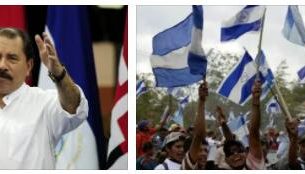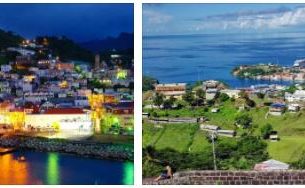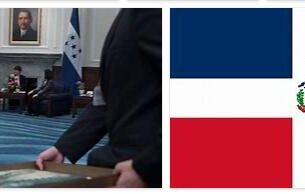Seat of the first Spanish colonization in the New World (due to events prior to the 18th century ➔ Hispaniola), the colony, commonly called Santo Domingo from the name of its capital, grew from a few thousand units in the early 18th century to about 100,000 by one. century later, while remaining much less prosperous than the French Saint-Domingue (➔ Haiti) and presenting a less polarized society. The Haitian revolution involved the colony (which the Treaty of Basle of 1795 had assigned to France) and in 1801 Santo Domingo was occupied by the forces of Toussaint Louverture ; recovered from Spain in 1809, the peace of Paris in 1814 it sanctioned his return under the sovereignty of Madrid.
According to fashionissupreme, in 1821 it proclaimed itself independent, but was invaded by the forces of Haiti, to which it remained annexed until 1844. The Haitian occupation, if it allowed the definitive emancipation of the slaves, was poorly tolerated by the population due to the ethnic and cultural differences that had consolidated between the two parts of the island. Nationalist resistance resulted in the revolt of 1843-44, which led to the birth of the Republic D. (1844). Further invasion attempts by Haiti prompted the Dominican government to bring the country backunder Spanish sovereignty in 1861, but a revolution restored independence (1865). In the nineteenth century the emigration of part of black Dominicans favored the consolidation of Creole hegemony. Despite the existence of a constitutional regime since 1844, the struggle between the different groups of the ruling class caused a marked instability, interrupted only between 1882 and 1899 by the long dictatorial government of U. Heureaux. The modernization process initiated by the latter stimulated development, capital flowed in from abroad but also the economic penetration of the USA increased. The strong growth of foreign debt and the financial crisis that exploded in the early twentieth century favored foreign interference and in 1905, also to avoid intervention by European creditors, the United States took on the debt of Santo Domingo and took over the administration of its customs (until 1940). In the following years, Washington increased its influence, until it militarily occupied the country (1916-24); only in 1947, once the payment of the debt had been completed, the Republic D. would have replaced the dollar with a national currency and created its own issuing institution.
In 1930, the army commander, RL Trujillo Molina established a personal dictatorship: he ruled the country for the next 31 years, both directly, as president of the Republic, and through subordinate presidents, exercising absolute dominion over all political life and social and taking control of a large part of the Dominican economy. After the assassination of Trujillo by a group of officers (1961), President J. Balaguer he tried to stay in power, but yielded to international pressure and the first free elections, in 1962, saw the victory of the progressive J. Bosch, founder of the Dominican Partido Revolucionario (PRD), but soon afterwards overthrown by a coup d’état. In 1965 a popular uprising overthrew the coup government, but was crushed by massive US intervention. The US occupation ensured a moderate outcome to the crisis and the presidential elections of 1966 were won by Balaguer, now at the head of a Partido Reformista Social Cristiano (PRSC) which was able, thanks also to US support, to cope with subversive pressures. Reconfirmed in 1970 and 1974, Balaguer held power until the victory of the PRD in 1978, which led A. Guzmán Fernández to the presidency. In 1982 Guzmán was reappointed to the post, but he committed suicide following allegations of embezzlement brought against members of the government and his family. After the presidency of SJ Blanco, whose policy of compression of internal consumption produced clashes and dozens of deaths, in 1986 Balaguer returned to the presidency of the Republic. Reconfirmed in 1990 and 1994, opposition protests, also resumed by the Catholic Church, forced him to accept a reduction of his mandate. In 1996, new presidential consultations were won by also taken up by the Catholic Church, forced him to accept a reduction of his mandate. In 1996, new presidential consultations were won by also taken up by the Catholic Church, forced him to accept a reduction of his mandate. In 1996, new presidential consultations were won by L. Fernández, candidate of the PLD (Partido de la Liberación Dominican, founded by Bosch in 1973), re-elected, after the four-year presidency of RH Mejía, in 2004 and reconfirmed in 2008; in May 2012 he was succeeded by D. Medina, who in 2016 obtained a second mandate. The presidential consultations held in July 2020 instead recorded the victory in the first round of the candidate of the Partido Revolucionario Moderno (PRM), Luis Abinader, who won about 53% of the votes against 37.5% of the candidate G. Castillo of the PLD.



